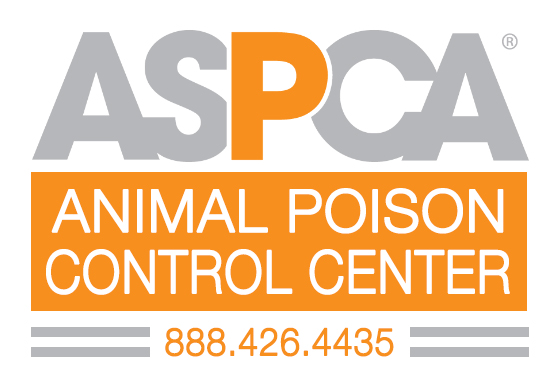Flea and tick poisoning in cats | Dr. Justine Lee, DVM, DACVECC, DABT, Board-certified Veterinary Specialist
Kudos to you for using flea and tick preventative in your dogs and cats. It’s important to keep a) your house free of fleas and hundreds of eggs, b) keep your pet comfortable, and c) prevent terrible diseases that can spread!
That said, make sure you are putting on the flea and tick medication correctly. One of the biggest mistakes I see pet owners making is putting “small dog” flea and tick medication on “big cats.” In other words, when cat owners accidentally put the wrong type of flea and tick medication on their cats, it can result in severe poisoning.
Why does this happen? Unfortunately, here are the top 3 reasons I see when cats are accidentally poisoned by flea and tick medication:
1. Pet owners buy flea and tick medication over the counter and don’t read the instructions carefully.
2. Pet owners guess on the weight of their cat. When in doubt, stop by your veterinarian and they’ll let you use their scale for free! Most cats weigh an average of 10-15 pounds, but some are quite obese and can be more than this. Very young or old cats can be 4-6 pounds, so when in doubt, check with your veterinarian or accurately weigh your cat.
3. Pet owners split products – in other words, they open up a bigger concentration and divide it onto multiple pets. This is really dangerous as it is not dosed appropriately or accurately.
When do I get concerned?
As a veterinarian and veterinary toxicologist, I get the most worried when the flea and tick medication is a HIGH CONCENTRATION chemical called a pyrethrin or pyrethroid.
Pyrethrins and pyrethroids are commonly found in household insect sprays and insecticides. Pyrethrins are chemicals which actually quite safe for dogs – they are actually modifications from natural chemicals derived from the “Mum” flower (Chrysanthemum spp.), while pyrethroids are synthetic derivatives (e.g., cypermethrin, cyphenothrin, allethrin, permethrin, deltamethrin, etofenprox, etc.). The synthetic pyrethroids were created to last longer and to be more effective, as natural pyrethrins break down rapidly when exposed to heat, air, and light.1
How do these chemicals work? They basically affect theopening and closing of sodium channels. When used appropriately, this causes the death of insects. But, when used accidentally on the wrong species (eg.., a cat), these chemicals can result in severe poisoning and even death in certain species (with cats and fish being very sensitive). When in doubt, you must check the concentration, the product, and the other chemicals involved to make sure it’s safe to use on your cat or dog.
These high concentration pyrethrins or pyerthroids typically come in high concentration DOG topical flea and tick spot-on medications (which typically contain a 40-60% concentration). You may also find the same chemical (the chemical name typically ends with a “-thrin”) in LOW concentrations in your household in the form of insect sprays and topical flea sprays and shampoos. These are typically < 1% and are safe to use around dogs and cats.
Keep in mind that while topical flea and tick spot-on products are safe for DOGS, they are very dangerous for CATS. Due to a cat’s altered liver metabolism, cats are significantly more sensitive to these chemicals than dogs. It’s estimated that cats become poisoned by pyrethrnins/pyrethroids in concentrations greater than 5-10%.
ALL cats are affected by pyrethroids/pyrethrhnins due to their altered liver metabolism. Likewise, fish are extremely sensitive with minute exposures. Debilitated animals – those that are sick, in poor health, have other medical problems, and thin are likely even more sensitive. Be very careful using these with cats, or even very small dogs, young, old, sick, or unhealthy pets.
So what signs do we see with poisoning or adverse effects from using pyrethrins/pyrethroids?
Clinical signs of side effects (seen in dogs) versus poisoning (seen in cats) vary between species.
In dogs, signs of an “adverse effect” typically are seen just in the skin and include:
- Rubbing and intense itchiness of the back on the carpet (secondary to paresthesia, an intense tingling sensation) to the area of application
- Redness and skin irritation to the skin area of application
- If the area was licked off, drooling or vomiting can occur
- Redness or squinting of the eye (if ocular exposure occurred)
- Limping (secondary to parethesia on the paws)
- Tremors (rare)
If your dog shows a reaction to pyrethrins/pyrethroids, I typically do not recommend using this type again. While it’s not an “allergic reaction” and doesn’t need to be treated with steroids or antihistamines, I’m concerned about the reaction and potential sensitivity in that dog.
What about in cats? In cats, poisoning from pyrethrhnins can be life-threatening. Signs include:
- Drooling or vomiting (if oral exposure occurred from secondary grooming or accidental ingestion)
- Agitation
- Hiding
- Paw flicking
- Ear or face twitching
- Lethargy
- Redness or squinting of the eye (if ocular exposure occurred)
- Walking drunk
- Muscle tremors
- Hyperthermia (secondary to tremoring)
- Clotting abnormalities (secondary to hyperthermia)
- Severe lethargy (secondary to a low blood sugar from tremoring or seizuring)
- Seizures
- Death
Treatment of pyrethrin or pyrethroid side effects in dogs includes:
- If a dog is having side effects or clinical signs from the product, the dog should have the product completely bathed off a mild liquid dish soap (used to wash the dishes in the sink) such as Dawn.™
- Once dried, the use of topical Vitamin E capsules can be used on the area where the product was applied. These Vitamin E capsules (which are normally meant for human oral consumption) can be cut open, and the oily contents of the capsule applied directly to the skin site. This can be used 4-6X a day, as needed, to help alleviate the paresthesia signs.
- Cool compresses can also be applied directly to the area of application several times a day to help alleviate the clinical signs of paresthesia.
- More severe side effects such as drooling, vomiting, inappetance, lethargy, walking drunk, or tremoring should be seen by a veterinarian immediately.
How do I treat pyrethrin/pyrehtroid poisoning in cats?
- If a pet owner is able to (without harm to themselves or to their cat), immediate bathing of the cat should be performed to remove the topical spot-on medication with a mild liquid dish soap (used to wash the dishes in the sink) such as Dawn™
- Immediate veterinarian attention
- Hospitalization for symptomatic supportive care
- Further decontamination at your veterinarian (e.g., bathing)
- Intravenous muscle relaxants (e.g., methocarbamol) to stop the tremors
- Intravenous anti-seizure medications (e.g., diazepam, phenobarbital) to stop the seizures
- Careful monitoring of the temperature
- Cooling or heating measures as necessary
- Intravenous fluids
- Blood glucose monitoring
In dogs, treatment typically is based on an outpatient basis; however, in cats, in-hospital treatment is typically required for 24-72 hours, or until clinical signs resolve.
So, calling all cat owners, here’s the best pay to keep your cats safe!
- The best way to prevent accidental exposure to cats is to always read the product label carefully prior to applying it to your pet.
- Prior to using any product, make sure you have an accurate weight on your pet. Your veterinary clinic will often let you weigh your pet in the lobby without an officially veterinary visit!
- Cats that groom dogs following recent spot-on applications are potentially at high risk for exposure; ideally, pets should be separated until the spot-on product has completely dried on the dog to prevent cat exposure.
- Talk to your veterinarian about the safest type of flea and tick medication for your pet.
- Never allow your dog into the water (e.g., koi pond, lake, etc.) after application of a concentrated spot-on flea and tick medication, as it can result in severe poisoning to fish. Wait until the product is completely dried (e.g., typically 24 hours).
When it comes to pyrethrin or pyrethroid poisoning in cats or side effects in dogs, know that the prognosis is excellent with aggressive dermal decontamination and treatment. When in doubt, keep your pet safe by taking the time to read the label and appropriately apply these products so accidental exposure doesn’t occur to your pets or to the environment!
When in doubt, if you think your cat or dog were poisoned, call the 1-800 number on the box of the product- they may be able to provide you life-saving 24/7 care and advice! You can also call your veterinarian, emergency veterinarian, or the ASPCA Animal Poison Control Center for life-saving advice.



I really like your article, would love to post it on our site with credit to you. We are launching our new and improved site in 2 weeks http://www.healthcareforpets.com
would love to collaborate on some ideas we have
regards
paul
Sure, no problem.